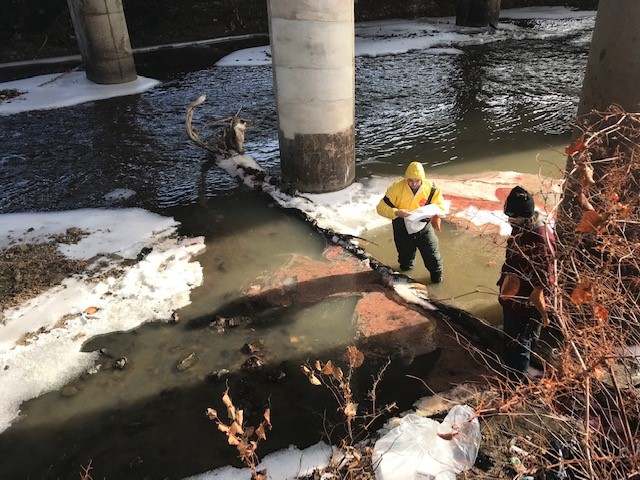When you hear the phrase “oil spill,” chances are the first image that comes to mind is the ocean. Maybe an oil tanker has run aground somewhere in the Pacific. Maybe there’s a rig off the coast of Norway that’s had a mishap. But oil spills can, and do, happen on rivers, and they are crises with serious consequences for ecosystems, wildlife, drinking water sources, and local communities. Because rivers flow continuously, oil can spread quickly across vast distances, making clean-up efforts urgent and complex. Addressing a river oil spill, then, demands immediate action, coordinated expertise, and an array of specialized tools and techniques. Here’s what typically happens during a river oil spill clean up.
1. Immediate Response & Containment
The first step in any oil spill clean up response is containment, carried out by an oil spill clean up company that specializes in such crisis situations. Emergency response teams are deployed rapidly to the spill site to prevent the oil from spreading farther downstream.
- Containment booms—floating barriers—are deployed to encircle the spill and keep it localized. (Oil is lighter than water, thus allowing it to stay on the surface, which is why this works.)
- Skimmers are used to physically remove oil from the water’s surface.
- High-priority areas—such as drinking water intakes, wildlife habitats, and recreational zones—are immediately identified and protected.
2. Assessment of the Spill
Once initial containment is in place, the oil spill clean up company assesses the spill to guide the oil spill clean up strategy.
- Teams determine the type of oil (e.g., crude, diesel, lubricants) and the volume released.
- Using drones, satellite imagery, and on-the-ground reconnaissance, experts map the oil’s spread and flow.
- Environmental impact assessments begin immediately to understand potential short- and long-term effects on river ecology and nearby communities.
3. Cleanup Techniques Used
When it comes to possible oil spill solutions, several different cleanup techniques might be used. The technique(s) chosen will depend on the river’s conditions, the oil’s characteristics, and the surrounding environment:
- Mechanical Methods: Skimmers, vacuum trucks, and absorbent pads are used to remove oil from the water’s surface and riverbanks.
- Chemical Dispersants: These are applied cautiously, as their use in freshwater is controversial. In certain scenarios, they help break oil into smaller droplets for natural degradation.
- Bioremediation: Specialized microbes are introduced to break down oil components into less harmful substances.
- Manual Cleanup: In sensitive areas, like wetlands or densely vegetated riverbanks, crews may rely on hand tools and absorbent materials to minimize further disruption.
4. Wildlife Rescue & Environmental Protection
One of the most heartbreaking consequences of an oil spill is its effect on wildlife. Birds, fish, amphibians, and mammals can suffer severe health impacts from exposure to oil.
- Specialized teams work to capture, clean, and rehabilitate affected animals, using cleaning agents, warm environments, and medical care.
- Efforts are made to shield vegetation and riverbanks from additional harm using protective barriers or temporary coverings.
- Local environmental organizations and wildlife experts often join cleanup efforts, lending crucial expertise and support.
5. Long-Term Monitoring & Restoration
After the visible oil is gone, the oil spill clean up work continues behind the scenes. Long-term monitoring and habitat restoration are essential to full ecological recovery.
- Water-quality tests and ecological surveys track the presence of toxins and assess the health of aquatic life.
- Revegetation efforts help restore eroded or damaged shorelines, while habitat enhancements support the return of wildlife.
- Ongoing monitoring tracks the spill’s impact on fish populations, bird-nesting sites, and plant communities for months, or even years, after cleanup.
Spills Happen
And wherever they happen—rivers or oceans—they demand a fast, coordinated, and skilled response. They demand a team steeped in the knowledge of oil spill solutions. Each step, from immediate containment to long-term restoration, plays a critical role in protecting water quality, preserving wildlife, and minimizing environmental damage.
While ACE Environmental does not specifically handle river oil spill emergencies, we do handle many other types of oil spills. As one of the leading environmental cleanup contractors for the Baltimore-Washington Metro region, our company has experience with the following types of oil spills: overturned tanker trucks; emergency highway cleanup; marine, stream, and stormwater drain contaminations; and more. Our land and marine based Emergency Oil Spill Response Team is available 24/7. We can quickly dispatch the right team, made up of the personnel and equipment you need, to get the job done efficiently and effectively. While oil spill prevention is always the goal, ongoing preparedness ensures that when it does happen, ACE Environmental is ready to act.

